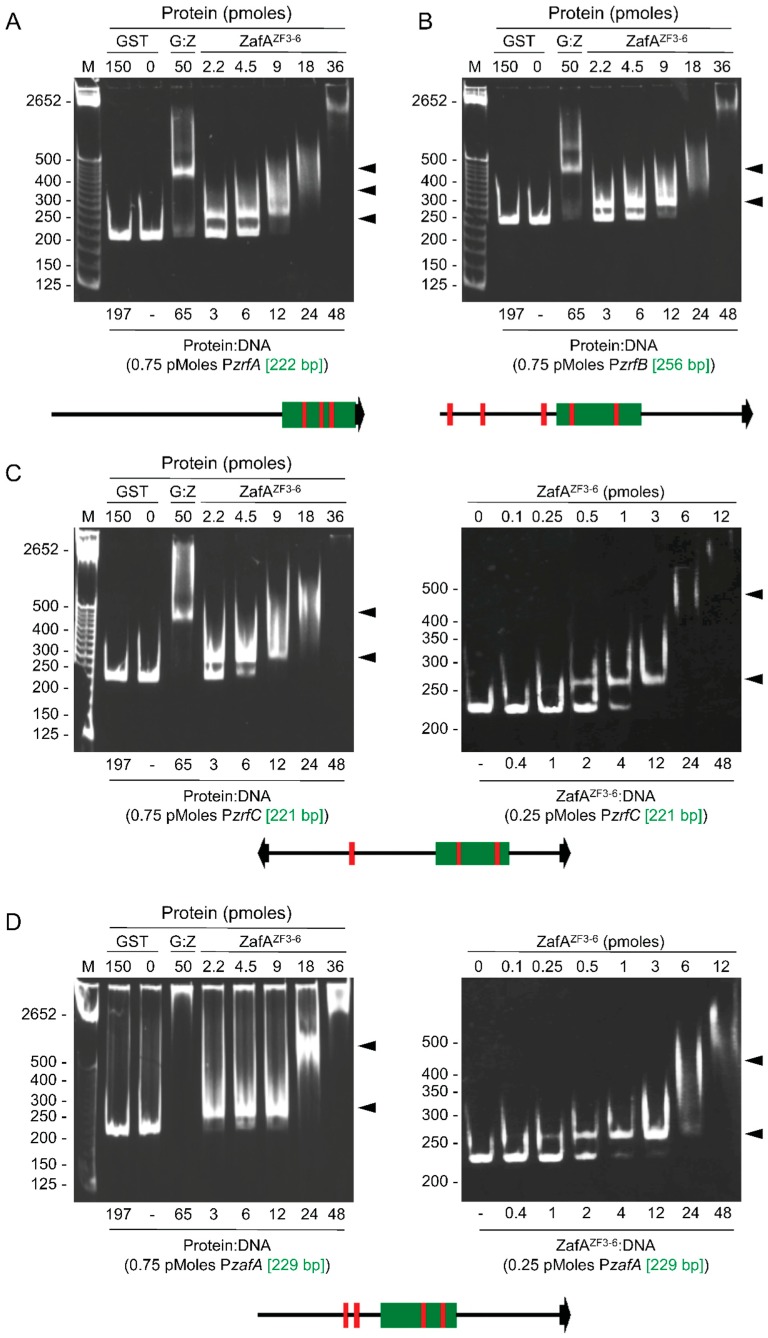Figure 4.
Analyses by Electrophoretic Mobility Shift Assays (EMSA) of the interaction of ZafAZF3-6 with different DNA fragments. (A) Interaction of ZafAZF3-6 with a DNA fragment from a promoter region of zrfA (green box) that carried three putative ZafA binding motifs (red boxes); (B) interaction of ZafAZF3-6 with a DNA fragment from a promoter region of zrfB (green box) that carried two putative ZafA binding motifs (red boxes); (C) interaction of ZafAZF3-6 with a DNA fragment from a promoter region of zrfC (green box) that carried two putative ZafA binding motifs (red boxes); (D) interaction of ZafAZF3-6 with a DNA fragment from a promoter region of zafA (green box) that carried two putative ZafA binding motifs (red boxes). In the right panel of (C) and (D), reactions were analyzed with lower ZafAZF3-6:DNA ratios to gain resolution. All DNA fragments were also incubated without protein and in the presence of both 150 pmoles of purified GST and 50 pmoles of the fusion protein GST-ZafAZF3-6 (as controls) to attain a GST:DNA ratio of 197 and a GST-ZafAZF3-6:DNA (G:Z) ratio 65. A 25-bp DNA ladder was used as a reference.

